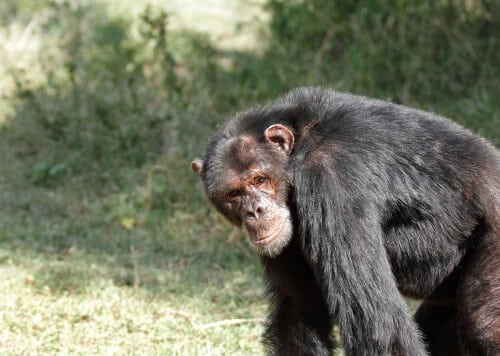The International Organization for Biological Diversity chose 23 reserves among them a scenic area in China (Mount Huangshan) which was chosen because of the proper management of a large number of visitors every year; Galeras Reserve in Colombia which was designed to contain the important diversity of the areas including mountain forests, volcanoes and valleys; the mangrove forests of the Limpopo estuary in Mozambique; Okavango Delta in Botswana; Ol Pejeta in Kenya, (Lewa OlPejeta &); The Pyrenees Reserve in Europe and many other reserves around the world

Conservation groups and organizations turn the spotlight on endangered species or habitats.
In mid-November 2014, the international conservation organization International Union for Conservation of Nature (IUCN) published a green list that turns the conventional approach on its head. This is the first time that instead of the Red List PThe organization listed the reserves in the world that are managed in the best way and provide plants and animals with the best conditions.
It has been a long time since the organization published long lists of endangered species. The Red List is a list used by organizations and governments as a measure of success or failure in conservation efforts. According to several indicators, global conservation activities are succeeding.
For example, the International Convention on Biological Diversity (CBD) set a goal in 2010 to protect 17% of land areas and 10% of oceans by 2020. Today, 15.4% and 3.4% are protected, respectively, according to Data published by the UN Environment Program.
But not all the reserved areas are in the same situation. For example, according to the Aquatic Conservation report, the developed network of marine reserves in Australia, which includes the Great Barrier Reef, has a minimal effect on the conservation of the oceans as a whole, since many of the boundaries of the reserves have been marked With the intention of preventing damage to those with a business and economic interest and not from the selection of areas of environmental importance, not from the selection of the most suitable areas for conservation.
Also, it turns out that even when reserves are declared, proper management is necessary "reserved areas do not fulfill their role if they are not properly managed" therefore according to the report "to ensure the future of animals and plants, declaring reserves is not enough." Today, the reserves contain only about 17% of the endangered terrestrial species.
If the conservation plan is implemented, the number of protected species will increase threefold, but the changes in land uses such as the increase in agricultural areas threaten the diversity of species. If the current trend continues, by 2040 the habitats of about 1000 endangered species will be halved. In order to prevent such a severe injury, international cooperation is necessary, a cooperation in which the Green List is an important component.
Already in 2012, the United Nations Organization for Conservation approved the Green List. Governments were asked to propose sites to be included in the list by matching 20 criteria, such as:
- Does the site have a focus on protecting only species within the boundaries of the site or in wider areas
- Declaring a reservation in a simple process that does not burden the budget
- Management and maintenance at a high level
- Effective management of visitors
- And more….
After submitting the nominated areas, the International Organization for Biological Diversity selected 23 reserves, including a scenic area in China (Mount Huangshan) that was chosen because of the proper management of a large number of visitors every year; Galeras Reserve in Colombia which was designed to contain the important diversity of the areas including mountain forests, volcanoes and valleys; the mangrove forests of the Limpopo estuary in Mozambique; door The Okongo in Botswana; Ol Pejeta Lewa in Kenya, (Lewa OlPejeta &); The Pyrenees Reserve in Europe and many other reserves around the world.
The organization will support international recognition of the reserves that are included in the green list, will assist in receiving financial and political help and will work to ease the bureaucracy in the registration, declaration and maintenance of the reserves, and will provide help for the recognition of the sites by tourism agencies. Using the green list, a positive routine of efficiency and management indicators will be created.
The green list sites are also selected based on the way they treat the people and residents who live and use the site's resources throughout history. This is with the intention of allowing the natives to continue living in protected areas. For example, in 2010, Britain declared a marine reserve around the Chagos Islands in the Indian Ocean. The residents of the islands were evacuated in 1970 due to the establishment of a US naval base, despite the declaration of a reserve, the residents will not be allowed to return, therefore "this is an example of a site that will not enter the green list".
I checked if there is an Israeli site that entered the green list, I searched and did not find it. Probably in addition to "hidden" reasons, none of the reserves in Israel are large enough and at the same time are not managed and controlled according to the organization's indicators.
